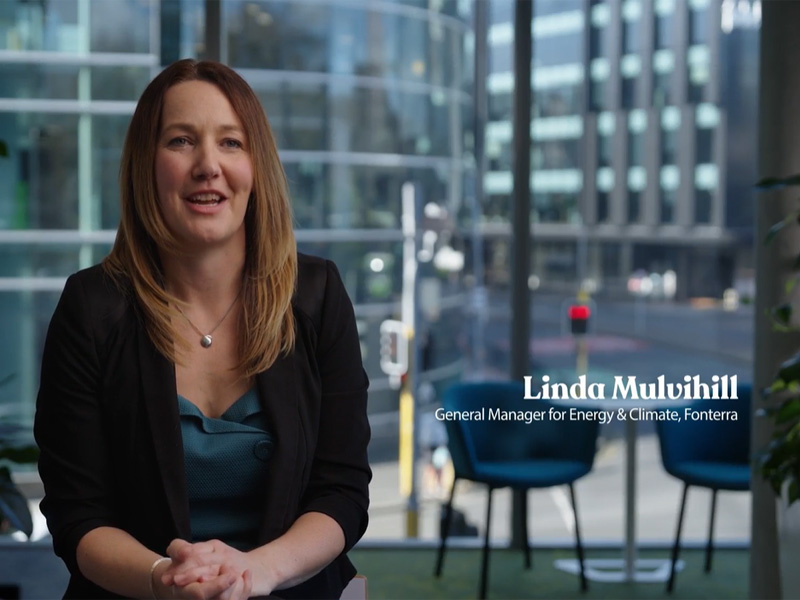Blog
Our plan to decarbonise manufacturing processes
Linda Mulvihill discusses Fonterra’s decarbonisation strategy to meet climate targets
26 Sep 2024
3 min
In November 2023, we announced the launch of Fonterra’s Climate Roadmap: Our strategy towards net zero 2050, which includes Fonterra’s 2030 targets. In the interview below, we talk to Linda Mulvihill, General Manager for Energy and Climate about what actions we’re taking to meet our Scope 1 and 2 emission reduction targets. Listen to part one below of the two-part series as Linda talks us through Fonterra’s manufacturing decarbonisation strategy and progress so far.
Watch Part 1 of the interview with Linda or read key Q&As from the interview below:

Q&A Part 1 with Linda Mulvihill - General Manager for Energy and Climate, Fonterra
Q: What are Fonterra’s emission reduction targets relating to manufacturing?
There are several emission reduction targets that Fonterra has relating to its Scope 1 and 2 emissions. The first one is that we are targeting a reduction in our emissions by 50.4% by 2030 from our FY18 baseline*. We also recently lifted our 2030 target from a 30% to the 50.4% as a result of our partnership with the Energy Efficiency and Conservation Authority.
Fonterra also has several other ambitions. We will cease using coal by 2037 which aligns with the domestic regulatory settings here in New Zealand. We also have a longer term ambition of net zero emissions by 2050.
Q: How does Fonterra plan to decarbonise it’s manufacturing processes?
Fonterra's Scope 1 and 2 emissions predominantly relate to our energy that we use to collect and process all of our farmer’s milk. So here in New Zealand we have about 500 odd tankers and they use a lot of diesel, and across our 28 sites we use a mixture of electricity, wood biomass, coal and natural gas.
Fonterra has been focusing on energy efficiency for quite some time. In 2003 we set targets relating to our energy use - how much energy we use per tonne of product we made. And in 2020 we achieved our then target of a 20% reduction in how much energy we use for each tonne of product we manufacture. This is still a key part of our strategy when we look towards our longer term emission reduction targets and there’s really good opportunities for us to further reduce our energy in terms of how efficiently we drive our tankers, and also in terms of reusing heat within our factories and integrating heat pumps.
Q: What key progress has been made in Fonterra’s decarbonisation strategy to date?
When we look at fuel switching across our manufacturing sites, we typically look at either electricity or woody biomass. The electricity we use here in New Zealand is generated from over 80% of renewable sources, such as hydro, wind and solar power. When we look at our wood biomass here in New Zealand, again, it is sourced from sustainably harvested forests, or we look at using some of the waste residues from our forest activities.
Over the past few years, Fonterra has been making some great progress towards transitioning off fossil fuels. In 2020, we converted our 43 megawatt coal boiler at our Te Awamutu site in the Waikato to use renewable wood pellets. In 2021, we introduced our first electric milk tanker into our fleet to go and collect our farmers milk to trial out that new technology.
In 2023 we had quite a few projects that started up including our first 100% renewable thermal energy site. We also installed a 30 megawatt biomass boiler at our Waitoa site in the Waikato and installed New Zealand's largest heat pumps at our Whareroa site in the Taranaki region.
As a result of all of these projects, we're on track for approximately a 16% reduction** in our absolute emissions from our 2018 base year and this is equivalent to taking about 114,000 cars off New Zealand roads.

*Fonterra Co-operative Group Limited commits to reduce absolute scope 1 and 2 GHG emissions by 50.4% by FY2030 from a FY2018 base year.
**Reduction period applies to end of FY2024.

